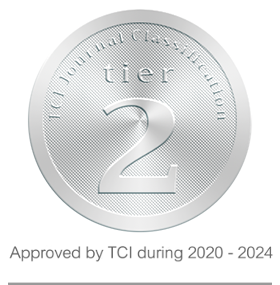Effects of Different Organic Fertilizers on Growth and Yield of Robusta Coffee Intercropped with Rubber Trees
Keywords:
Bio-sludge pellets, Chicken manure pellets, vermicompostAbstract
Growing coffee intercropped with para rubber is a way to increase income for farmers in a time when the price of rubber is falling. Therefore, proper soil and fertilizer management will help main and companion crops grow well. Therefore, this research aimed to study the type of organic fertilizer combined with chemical fertilizer to promote the growth of 3-year-old Robusta coffee grown with 15-year-old rubber trees at Ban Khao Wang Ching, Khok Muang Subdistrict, Khlong Hoi Khong District, Songkhla Province. The experiment was analyzed using a Completely Randomized Design (CRD), divided into 3 treatments with 8 replications (1 plant/replication). Using chemical fertilizer (15-15-15) at a rate of 300 g/plant/year, divided into applications every 4 months, 100 g/plant at a time, applied together with a different type of organic fertilizer, namely bio-sludge pellets, chicken manure pellets, vermicompost at the rate of 8 kg/plant/year, divided and applied every 3 months, 2 kg/plant at a time, and use straw to cover the base during the dry season. The results found that the application of chemical fertilizer 15-15-15 at the rate of 300 g/plant/year combined with chicken manure pellets at the rate of 8 kg/plant/year and covering the below canopy zone with rice straw is the most suitable method for growing Robusta coffee with rubber trees. Because it can make Robusta coffee plants grow well and produce the best fruit size. This study indicates that chicken manure pellets could be a valuable tool for increasing the production of Robusta coffee intercropped with rubber trees, through improved growth and yield.
References
Academic Office. 2013. Rubber crisis. Bangkok: Secretariat of the House of Representatives. (In Thai)
Asten, P.J.A., Wairegi, L.W.I., Mukasa, D. and Uringi, N.O. 2011. Agronomic and economic benefits of coffee-banana intercropping in Uganda’s smallholder farming systems. Journal of Agricultural Systems 104 (4): 326–334.
Chiarawipa, R. 2019. Rubber-based intercropping system in southern Thailand: Its constraints and planting patterns on sustainable productivity. King Mongkut's Agricultural Journal 37 (1): 179-189. (In Thai)
Office of Agricultural Economics. 2022. Agricultural product production information: Coffee. Available online: https://www.oae.go.th/assets/portals/1/fileups/prcaidata/files/coffee%2065.pdf
Horticultural Science Society of Thailand. 2018a. Retracing the history of world coffee. Horticulture Journal 33 (1): 3-13. (In Thai)
Horticultural Science Society of Thailand. 2018b. Coffee…from agriculture to industry. Horticulture Journal 33 (2): 4-13. (In Thai)
KhunThamdee, P. 2016. The rubber crisis: problems and solutions. Bangkok: Thammasat University. (In Thai)
Marcos, J. and Rogerio, P. 2015. Higher yield and economic benefits are achieved in the macadamia crop by irrigation and intercropping with coffee. Science Horticulture 185: 59-67.
Netsere, A. and Kufa, T. 2015. Intercropping of arabica coffee with turmeric (Curcuma longa) and ginger (Zingiber officinale Rose) at Tepi. Journal of Biology, Agriculture and Healthcare 5 (7): 65-69.
Pinthukas, N. and Angkasith, P. 2017. Arabica Coffee Farming Extension Pattern and Process in Royal Project and Highland Development Project Using Royal Project System. Khon Kaen Agriculture Journal 45 (Suppl. 1): 521-526. (In Thai)
Pokeeree, N., Rangsipaht, S. and Sriboonruang, P. 2018. Factors related to robusta coffee production of farmers in Rubror sub-district, Tha Sae district, Chumphon province. King Mongkut's Agricultural Journal 36 (2): 43-52. (In Thai)
Suteekanchanothai, P., Chiarawipa, R., Somboonsuk., B. and Sirikhantayakul, C. 2017. Effects of chemical and organic fertilizers on Growth of Robusta coffee trees in rubber plantations. Songklanakarin Journal of Plant Science 4 (4): 25-31. (In Thai)
Zaw, Z.N., Chiarawipa, R., Pechkeo, S. and Saelim, S. 2022. Complementarity in rubber-salacca intercropping system under integrated fertilization mixed with organic soil amendments. Pertanika Journal of Tropical Agricultural Science 45(1): 153-170.
Downloads
Published
How to Cite
Issue
Section
License
Copyright (c) 2023 Songklanakarin Journal of Plant Science

This work is licensed under a Creative Commons Attribution-NonCommercial-NoDerivatives 4.0 International License.



